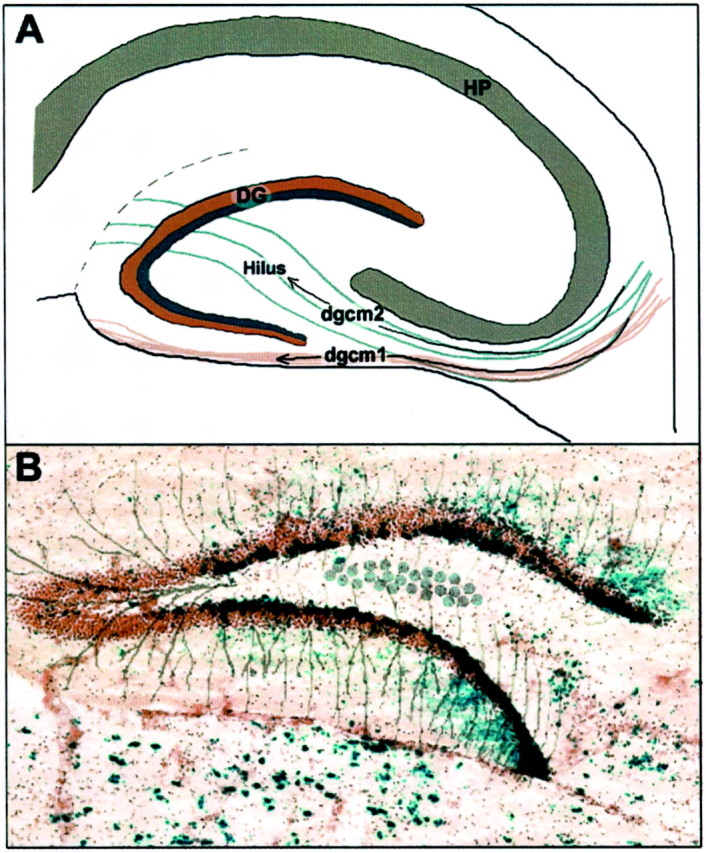Fig. 6.

Illustrations depicting the distribution of radial glial processes in the dentate gyrus and the migratory streams of the dentate granule cells that may follow these processes.A, Schematic of a postnatal hippocampus with an overlay of the early developmental patterns of radial glia and the two separate dentate granule cell migrations [adapted from Rickmann et al. (1987);Altman and Bayer (1990b)]. DG, Dentate gyrus;HP, hippocampus proper. The granule cells of the outer shell (red) arrive through the first granule cell migration (dgcm1), probably by route of the fimbrial radial glia bundle (light red). The granule cells of the inner core (blue) are established from the progenitors of the dentate hilus, which arrive through the second granule cell migration (dgcm2), most likely by following the arrangement of radial glia (light blue) that traverse through the dentate hilus. B, Example of the early developmental radial glia patterns of the dentate gyrus superimposed over a chimera with a mirrored inner core granule cell layer demonstrating how this unique arrangement of radial glia would allow for the symmetric development of each dentate blade from a common progenitor pool in the hilus.
